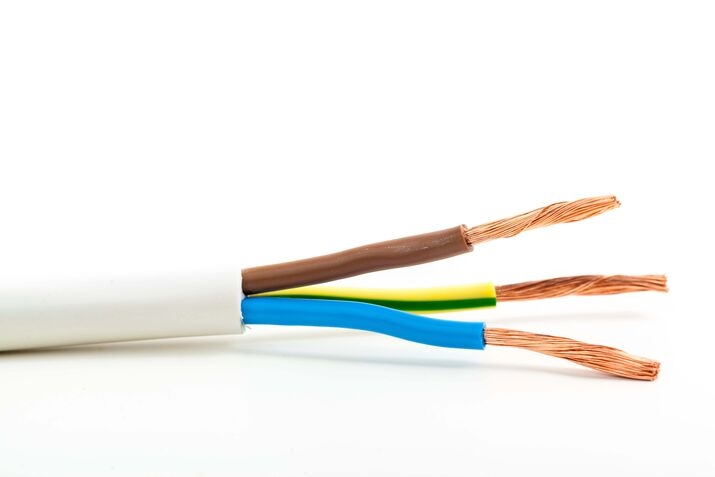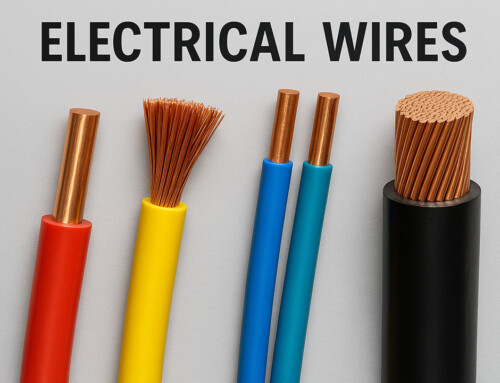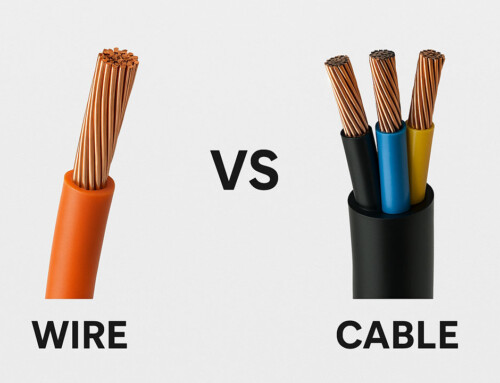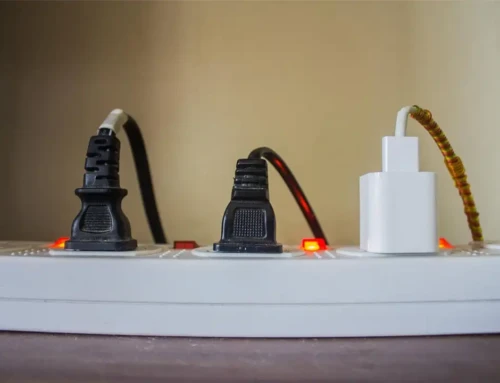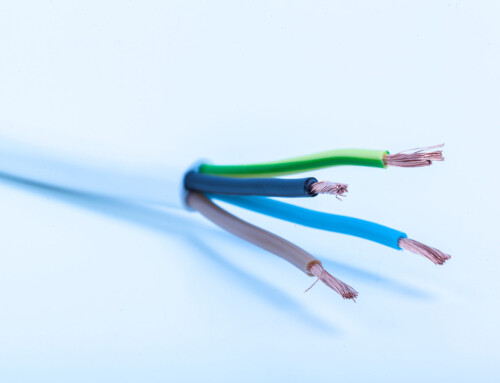Table of Contents
Do you wonder what Romex wire is and what it is used for? If so, you are in the right place. Along with its uses, types, and benefits, this blog post also covers the vital safety practices that you should keep in mind when working with Romex cables.
So, grab a cup of coffee and get ready to explore the ins and outs of Romex wire!
What is Romex Wire?
Romex wire, also known as non-metallic (NM) sheathed cable, is a popular form of electrical wiring found in both homes and businesses. When you buy NM cable, it usually comes in three parts: the outer cable wrapping, wire insulation, and individual wires (conductors).
The outer coating of NM electrical cable is a robust 30 mil PVC jacket intended to protect the individual wire conductors. Depending on the gauge of the conductors within, the outer jacket may be white for 14-gauge, yellow for 12-gauge, or orange/reddish for 10-gauge wires.
To connect devices using this type of wiring, you rip the lateral with a “cable ripper.” Then, any remaining connected portions are cut off using a utility knife, scissors, or the snipping feature of the wire remover.
The individual wires within this protective covering are insulated with color-coded PVC—typically black for one hot leg, white for the neutral leg, and red for another hot leg. The ground is uncoated. However, it can occasionally be covered in green.
Each electrical wire within Romex is made from soft, uncoated copper. This makes them easy to handle and work while installing. Although earlier versions used aluminium forms, those aren’t allowed anymore. Only pure copper carries code now when working on residential buildings.
What Is Romex Wire Used for?
Romex wire is often used for household wiring. It may be found in a variety of locations throughout the home or duplex.
- Exposed Areas: Romex wire may be exposed in locations where people do not spend much time, such as attics and basements. However, it must be securely stored and safeguarded from physical harm. If required, you can secure it with a conduit that flows through the walls between basement rooms.
- Single- and Two-family Homes: NM cable is appropriate for wiring lights, receptacles, and other power needs in one- and two-family dwellings. This applies to both attached garages and unattached buildings, such as storage sheds.
- Concealed Spaces: When wiring a new home or installing extensions to an existing one, Romex works its magic beneath plasterboard surfaces or within the stud structure! You can even move it behind finished walls if you need to install additional electrical components.
- Dry Areas: The National Electrical Code (NEC) states that NM cables should only be used in dry environments based on their definitions of moisture levels. This means no running along the ceiling of a covered porch or patio!
What are Different Types of Romex Wires?
There are a few different types of Romex wiring. Each one has a specific purpose around the house. Knowing which one to use can make all the difference!
- 14 Gauge Wire: This wire is ideal for 15-amp circuits in your house. It is commonly used for ordinary lighting circuits or electronic receptacles (outlets). Some homeowners are even starting to connect these circuits at 20 amps.
- 12 Gauge Wire: Yellow-colored 12-gauge wire is commonly used to power standard household outlets and a range of plug-in products. It’s also suitable for dedicated appliance circuits that demand a powerful 20-amp power supply.
- 10 Gauge Wire: For even more heavy-duty applications, 10-gauge wire can carry loads of up to 30 amps. This makes 10 gauge wires ideal for use in range hoods, freezers, and air conditioners.
What are the Different Advantages of Romex Wire?
Now is the time to discuss the amazing benefits of using Romex wire. Here they are:-
- Safety: Romex wiring is exceptionally safe because of its thick outer jacket. It protects the wires from physical harm and keeps them from coming into touch with other things. Furthermore, the grounding wire conducts electrical current away from critical components in the event of a breakdown or short circuit.
- Versatility: NM wire may be used for a variety of electrical applications, including lights, outlets, appliances, and HVAC systems. Its versatility makes it ideal for both residential and business operations.
- Easy Installation: NM wire is designed to be easy to connect. Electricians can swiftly run the wire through walls, ceilings, and floors, reducing installation time and labor costs.
- Cost-effective: On top of all of these fantastic benefits, Romex wire is affordable! It is inexpensive when compared to other forms of electrical wiring. Thus, it is an attractive option for both home and commercial applications.
What are the Safety & Regulation Requirements of Romex Wire?
When it comes to Romex wire, safety and regulations are essential for a successful electrical project. Here are some crucial points to keep in mind:
- Qualified Electricians: It’s crucial to consult with a licensed electrician for any work involving Romex or other electrical wiring. They have the expertise needed to navigate the complexities and risks associated with electrical projects.
- Right Tools & Right Materials: Using the correct tools for cutting and stripping wires, along with appropriate connectors for Romex installation, is essential. This helps prevent accidents and ensures proper installation.
- National Electrical Code (NEC): The NEC sets safety standards for electrical installations in the United States, including guidelines specific to handling materials like Romex. Adhering to NEC guidelines when working with NM cable is essential. It ensures your wiring meets safety standards while minimizing hazards.
- Environmental Factors: Be mindful of where you use Romex in the following environmental conditions:-
- Wet Environments: Avoid using Romex in areas like bathrooms, laundry rooms, or outdoors, where exposure to moisture can lead to insulation damage and potential hazards.
- Direct Sunlight: Prolonged sun exposure can degrade the PVC sheath of Romex over time. Protecting it from direct sunlight is critical.
- Physical Damage: Securely place Romex within walls or conduit to prevent punctures that could expose live wires.
If you feel uncertain about installing NM cables, do not hesitate to consult a qualified electrician. Their expertise helps ensure a safe code-compliant system!
What are the Important Safety Practices for NM Cables According to NEC?
When it comes to using Romex cables, there are a few key safety practices you should keep in mind, according to NEC. Let’s break them down:
- Overload Prevention: Each size of Romex has a specific amperage rating. Make sure not to overload your circuit by connecting too many appliances or exceeding the recommended amperage for the wire gauge. Overloaded circuits can overheat, damage wires, and even lead to fire hazards. For the right Romex size and load capacity for your intended use, it’s best to consult an electrician.
- Damaged Romex: Always inspect your NM cables for any signs of damage, such as cuts, nicks, or fraying of the outer sheath or exposed wires. If you notice any damage at all—replace it immediately! Damaged Romex poses serious safety risks.
- Moisture Exposure: Be cautious about using Romex in areas with excessive moisture or potential water contact. Moisture can damage the cable’s insulation and increase electrical shock risk.
- Grounding: Proper grounding is essential for electrical safety when working with NM cables. Make sure that all installations, including a bare copper grounding wire, are securely connected to designated grounding terminals in outlets, switches, and electrical panels.
In conclusion, Romex wire, also known as non-metallic (NM) sheathed cable, is a versatile and safe option for electrical wiring in homes and businesses. It offers a reliable and efficient solution, prioritizing safety and functionality.
Remember, don’t hesitate to seek guidance from a qualified electrician if you have any uncertainties about installing Romex. Always ensure a safe and code-compliant system.

